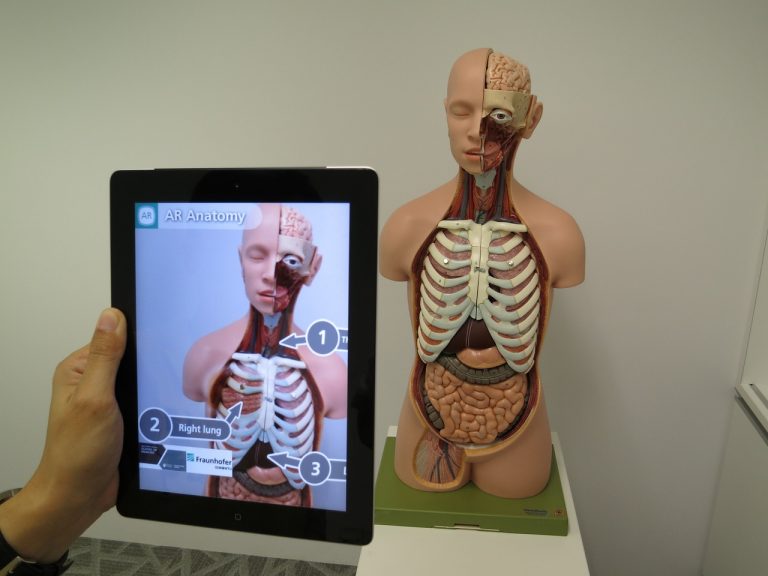Augmented reality (AR) and virtual reality (VR) hold transformative potential in legal proceedings by enhancing juror understanding and evidence presentation. These technologies can create immersive, interactive experiences that make complex information more accessible and comprehensible for jurors, potentially leading to more informed decisions.
AR and VR can also help reconstruct accident scenes or visualize injuries, providing a clearer, more impactful representation of evidence. NYC Injury Attorneys, P.C. leverages these cutting-edge technologies to better serve our clients. As experienced NYC personal injury lawyers, we utilize AR and VR to present compelling, detailed evidence, ensuring our clients receive the best possible representation.
Understanding Augmented Reality (AR) and Virtual Reality (VR)
Definitions and Differences
AR and VR are transformative technologies with distinct characteristics. AR overlays digital information in the real world, enhancing physical environments with interactive elements. In contrast, VR creates an entirely immersive virtual environment, isolating the user from the real world and simulating a different setting. These differences define how each technology can be utilized in various applications, including legal proceedings.
Technological Components
AR and VR rely on advanced hardware and software components. Key hardware includes headsets, sensors, and controllers that track user movements and interactions. Specialized software is essential for creating and managing digital environments and overlays, ensuring a seamless and interactive experience for users.
Enhancing Juror Understanding with AR and VR
Immersive Crime Scene Reconstruction
VR can recreate crime scenes in 3D, allowing jurors to walk through the scene virtually and better understand spatial relationships and event sequences. This immersive experience helps jurors visualize the incident more clearly, providing a comprehensive understanding of the facts presented.
Interactive Evidence Presentation
AR can overlay digital information on physical evidence, making complex data more accessible and understandable for jurors. This technology can highlight crucial details, annotate evidence, and provide additional context, enhancing the jurors’ ability to grasp intricate aspects of the case.
Benefits of AR and VR in Legal Proceedings
Improved Comprehension
Studies show that jurors can better comprehend complex evidence when presented through AR and VR, leading to more informed decision-making. These technologies simplify the presentation of intricate information, ensuring that jurors can fully understand the evidence and its implications.
Enhanced Engagement
Immersive technologies keep jurors more engaged, reducing the likelihood of misunderstandings and increasing information retention. By making the evidence presentation more interactive and visually appealing, AR and VR help maintain jurors’ attention and focus throughout the trial.
Challenges and Ethical Considerations
Privacy and Data Security
Using AR and VR raises ethical concerns related to privacy and data security. It is essential to ensure the secure handling of sensitive information, protecting it from unauthorized access and breaches. Addressing these concerns is crucial for maintaining the integrity of the legal process.
Admissibility of Digital Evidence
Ensuring the admissibility of AR and VR-generated evidence presents legal challenges, including questions of authenticity and potential biases. Courts must establish clear guidelines for verifying the accuracy and reliability of digital evidence to prevent any undue influence on the verdict.
Case Studies and Real-world Applications
Notable Examples
There are notable cases where AR and VR have been successfully used in courtrooms to enhance evidence presentation and juror understanding. These examples demonstrate the practical benefits of these technologies in making complex evidence more accessible and compelling.
Impact on Verdicts
The use of AR and VR technologies has influenced jury verdicts, improving the accuracy of trial outcomes. By providing a clearer understanding of the evidence, these technologies help ensure that jurors make well-informed decisions based on a comprehensive evaluation of the facts.
Role of NYC Injury Attorneys, P.C. in Utilizing AR and VR
Advocacy and Expertise
We leverage AR and VR to build stronger cases and effectively present evidence. Our expertise in these technologies enables us to create compelling presentations that enhance juror understanding and engagement.
Client Education and Support
We educate clients about the benefits and limitations of using AR and VR in their legal proceedings. By providing clear explanations and support, we ensure that clients are fully informed about how these technologies can impact their cases and enhance their chances of success.
Conclusion
AR and VR have the potential to revolutionize the courtroom experience by enhancing juror understanding and evidence presentation. These technologies offer immersive and interactive ways to present complex information, making it easier for jurors to comprehend and retain critical details.
We are committed to adopting innovative technologies to better serve our clients. Our expertise in leveraging AR and VR ensures that we provide compelling and effective legal representation. For expert legal assistance and to learn more about how we can help you with your case, contact an NYC personal injury lawyer today.

